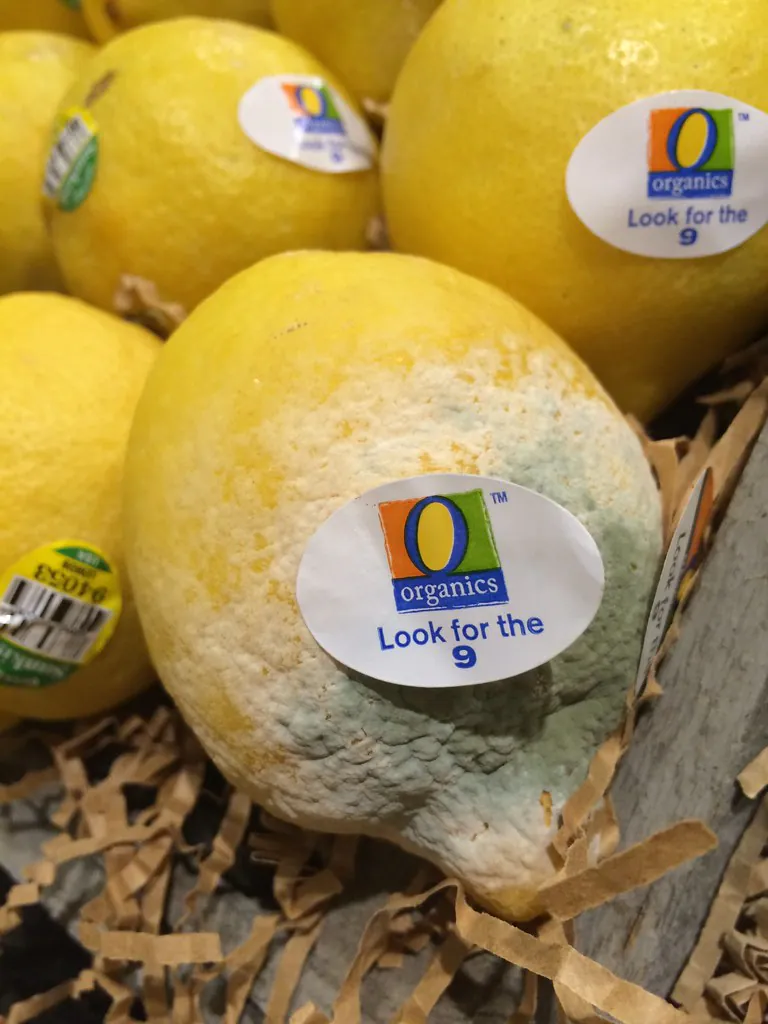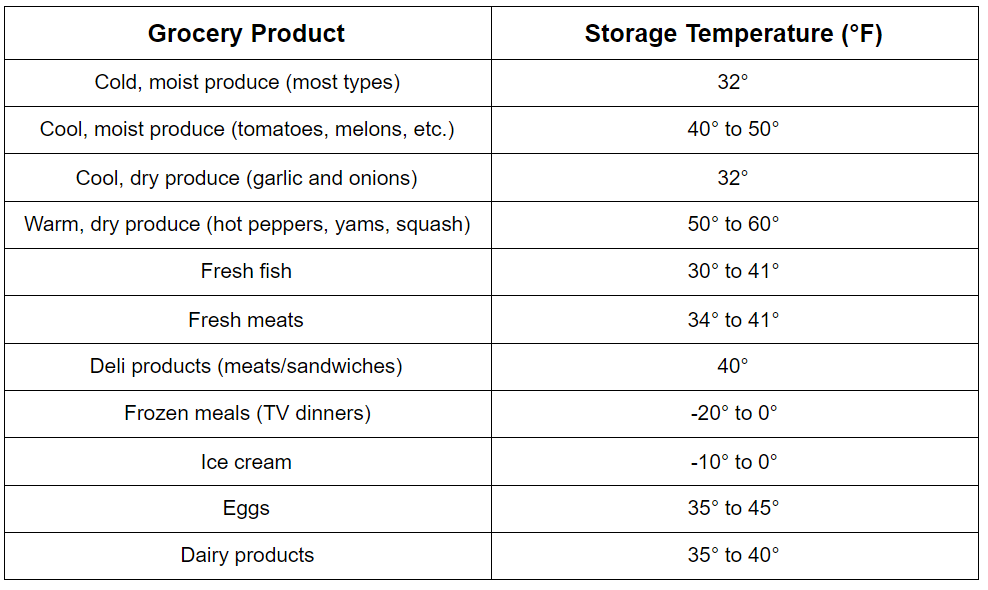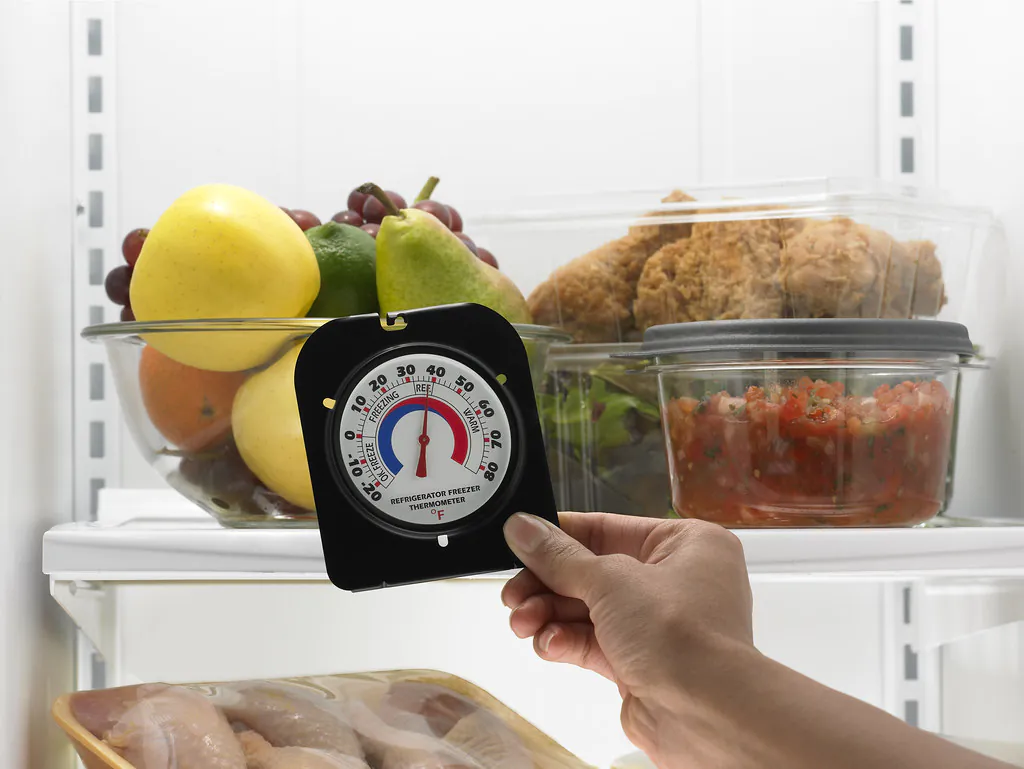Wait a minute—don’t we all know how to use refrigerators? They are a staple in American homes, and refrigerating food can’t be that hard to figure out. You just open the door, place food in, and let the fridge do its thing, right?
Yes, but refrigerating food is not quite that simple.
Refrigerators may be easy to use, but food safety and quality depend on your storage practices. Your fridge can only keep your family safe and your food tasty if you pay special attention to how you store food inside it.
There’s a lot more to refrigerating food than sticking it in the fridge or freezer until you’re ready to cook or eat it. So, let’s look at the risks of improper food storage and see how we can get the most out of our refrigerators.
Table of Contents
FOOD POISONING CAUSES AND PREVENTION

This image shows a variety of Salmonella. These bacteria commonly cause food poisoning. (Source: Centers for Disease Control and Prevention)
“Food poisoning” is not a specific disease. Rather, it’s a basic label for diseases called “foodborne illnesses.” These are caused by food that has been contaminated by bacteria. Let’s look at a few common types.
According to the US Food & Drug Administration (FDA), Salmonella, E. coli, and C. botulinum commonly cause foodborne illness. Here’s a quick overview of what these bacteria can do to your body and how they enter it:
Salmonella causes an infection that is rarely deadly but still causes nasty stomach flu-like symptoms. Animal products such as meat and eggs are the most common sources of Salmonella, but Salmonella can also live on vegetables exposed to contaminated soil or water.
You may be familiar with E. coli from news stories about food recalls (often romaine lettuce). There are several E. coli strains, but the O157:H7 strain is a common cause of food recalls. The infection that results from E. coli food poisoning is rarely fatal, but stomach flu-like symptoms are common. Most E. coli outbreaks have been associated with raw or undercooked beef and leafy greens.
C. botulinum can cause a rare but fatal disease called botulism. According to Mayo Clinic, botulism disrupts nerve functioning. So, symptoms include facial weakness, blurred or double vision, and paralysis. The most common foods that may harbor C. botulinum are canned fruits and cured meats.
WHAT ABOUT MOLD?

We just got through a bunch of nasty stuff, but we haven’t said a single thing about mold yet. Molds are fungi, not bacteria, but most of us still consider mold to be a health risk.
Believe it or not, mold isn’t likely to make you very sick. Some people are allergic to penicillin, and mold could clearly get them sick. However, moldy food won’t harm most people. Your food won’t taste very good, but you likely won’t get deathly ill.
It’s still not a good idea to eat moldy food, even though you probably won’t die from it. Bacteria and other toxins may live on the mold, and those could make you sick.
THE IMPORTANCE OF PROPER REFRIGERATION
So, how do we avoid those nasty microorganisms from getting in our food and making us sick?
Refrigerating food stops the growth of microorganisms that cause foodborne illness. The cold temperatures may even deactivate some of those microbes. Therefore, the recommended maximum refrigeration temperature is 40° Fahrenheit (4° Celsius).
However, some bacteria and mold are resistant to 40°F temperatures. For example, listeria can grow on lunchmeats and unpasteurized milk products at 40°F.
Freezing eliminates the risk of bacterial growth and food spoilage. Your freezer will inactivate all microbes if you set the temperature at or below 0°F (-18°C). (Note: Bacteria and mold can activate and contaminate food again upon thawing.)
Temperature is just one part of it, though. Air circulation is also vital to proper refrigeration.
Some of us pack all the refrigerated items in our fridges or freezers as tightly as possible. “Refrigerator Tetris” may be fun for some people, but it’s not a very safe practice. It’s difficult for your fridge to maintain a constant temperature when the air can’t circulate around all the food. The food needs a constant cold temperature to reduce the risk of microbial contamination.
FREEZING FOOD
As you know, freezing food deactivates microbes on your food. So, the real question is this: How long can food last in a freezer before spoiling?
You can store food in a freezer indefinitely. It won’t spoil or become contaminated. However, just because you can do it doesn’t mean you should.
There’s a reason why there are charts all over the internet with recommended freezer durations for certain foods. Food safety is not the issue. Food quality is. Some foods may smell or taste bad when left in the freezer for long periods, even though there isn’t a risk of bacterial or mold contamination.
Some foods also don’t freeze well. You CANNOT freeze canned foods and shelled eggs at all. It’s also not a good idea to freeze cream sauces, mayonnaise, lettuce, and non-frozen dairy products. While frozen sour cream, cottage cheese, and other dairy products won’t hurt you, they separate when frozen. That messes up their texture and makes them taste bland. Lettuce can also get slimy and loses its fresh crunch when thawed.
So, freezers keep your food safe, but they may seriously reduce food quality. Food could get freezer burn, which is safe but unappetizing. Your food will also likely be dry upon reheating. As you can see, freezing will NOT guarantee quality.
RECOMMENDED STORAGE TEMPERATURES
Storage temperatures vary among food categories. We’ve prepared a table of common food categories and their storage temperatures. (Sources: California Department of Education, Cornell University, and New York National Guard Food Service.)

HUMIDITY
Did you notice that I split the produce into categories? Cornell University divides fruits and vegetables into four storage groups based on temperature and humidity needs. So, I used that same classification here.
It’s reasonable to expect that sweet potatoes would require less humidity than a head of lettuce. You also have to consider that when you store fresh food. It’s not just with produce either; relative humidity affects the quality of fresh meat as well. Meat kept in dry conditions could lose weight. Drier meat doesn’t lose its nutritional value, but it won’t taste as good.
Your fridge may have special compartments for certain foods. These drawers have more humidity control than the rest of your fridge and keep produce from overripening or wilting. That’s why many people put fruits and veggies in the drawers.
Here is a relative humidity chart for fresh foods. (Sources: Cornell University and the Food and Agriculture Organization of the United Nations.)

Cornell University’s Cooperative Extension has a thorough resource for vegetable storage. You can access it HERE for more detailed temperature and humidity information on specific fruits and vegetables.
There are some excellent charts out there for food storage best practices. We hope you’ll use them as a guide to refrigerating food to keep your families safe and satisfied. As I said earlier, Cornell Cooperative Extension’s vegetable storage guide is a good place to start. Other resources include the New York National Guard’s Food Service storage guide and the University of Georgia’s Cooperative Extension consumer’s guide.






